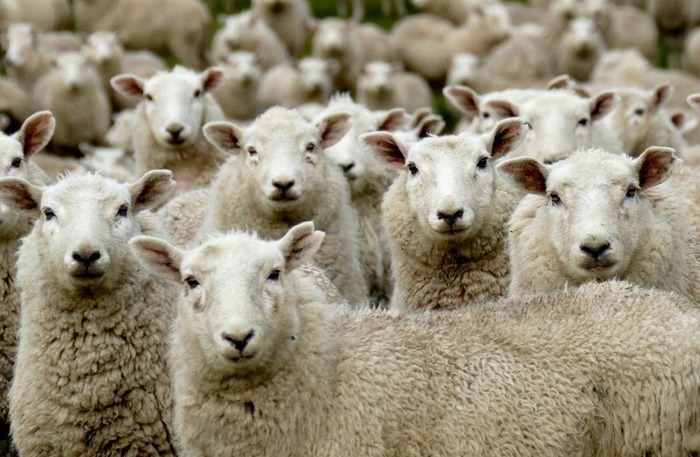Why art should feature in your investment portfolio
Art has always been appreciated and sought after by the elite. It is a unique form of expression that has the power to evoke emotion and communicate human experiences. But art is no longer just a luxury item reserved for the wealthy - it has now become a viable investment opportunity. In recent years, the art market has seen a significant surge in demand and interest from investors looking for alternative investments. In this article, we'll explore why art should be in your investment portfolio and how to make it work for you.
Understanding the value of art in investment
Investing in art can be a lucrative option if you know what you're doing. Traditionally, art was purchased for aesthetic value, but now investors also look at the potential returns. Art is now considered an alternative investment, and it can be an excellent source of diversification for your portfolio. Adding art to your portfolio will expose you to a unique asset class with low correlation to traditional investments like stocks, bonds, and real estate.
The history of art as an investment
Art has been used as an investment medium for centuries. Kings, queens, and noblemen collected art, not just for aesthetic purposes, but also as a means of preserving and storing their wealth. The Medicis, for instance, were one of the most prominent art collectors in history, and their collection of art was a symbol of their wealth and power.
Fast forward to the modern-day art market, and the demand for art has never been higher. Artworks that were once purchased for hundreds of thousands are now being sold for tens of millions. Contemporary artists like Jeff Koons, Damien Hirst, and Banksy have become household names, and their artworks have become highly sought after by collectors and investors alike.
Factors that contribute to the value of art
There are several factors that contribute to the value of art. One of the most significant factors is the rarity and uniqueness of the artwork. For example, if an artist only created a limited number of artworks during their lifetime, the value of those artworks will likely increase over time.
The artist's reputation, historical significance, condition, and provenance also play a vital role in determining the value of a particular artwork. For instance, an artwork by a renowned artist like Pablo Picasso or Vincent van Gogh will likely be worth more than an artwork by a lesser-known artist.
As an investor, it's essential to evaluate these factors before investing in a piece of art, giving you the best chance of getting a return on your investment. It's also important to keep in mind that the art market can be volatile, and the value of an artwork can fluctuate over time.
The role of art in a diversified portfolio
Since alternative investments like art have a low correlation to traditional investments, adding art to your portfolio can help reduce risk through diversification. Owning a variety of investments that perform differently under different market conditions can help reduce overall portfolio risk. Thus, art investments can be used to help balance and diversify the risk in your investment portfolio.
Moreover, investing in art can provide a sense of satisfaction and enjoyment beyond financial gains. Owning a piece of art that you appreciate can bring joy and beauty to your life, making it a valuable addition to your investment portfolio.
Different types of art investments
Art investment is a unique way to diversify your portfolio while indulging in your passion for art. Investing in art can be a profitable venture, especially if you know the ins and outs of the art market. In this article, we will explore the different types of art investments and their potential for growth.
Investing in traditional art forms
Traditional art forms such as paintings, sculptures, and fine art prints are the most popular types of art investment. Investing in traditional art forms is where most of the money is being spent in the art market. The most expensive artwork ever sold at auction was Leonardo da Vinci's Salvator Mundi, which brought in a whopping $450 million.
When investing in traditional art forms, it is essential to do your research and invest in well-established artists with a proven track record. These artists' works are more likely to retain their value over time and have a higher potential for appreciation. Some of the most sought-after artists in this category include Pablo Picasso, Vincent van Gogh, and Claude Monet.
Exploring contemporary and emerging artists
Contemporary and emerging artists represent the future of the art market and can be a great investment opportunity. New artists' work can appreciate significantly in value if their reputations and sales improve. These artists usually price their works favourably, making it easier for investors with lower budgets to invest in them.
Investing in contemporary and emerging artists requires more research and due diligence since their work is not yet established in the art market. However, investing in these artists can be a rewarding experience, both financially and artistically. Some of the most promising contemporary artists include Yayoi Kusama, Banksy, and Jeff Koons.
The rise of digital art and NFTs
Digital art and NFTs have revolutionised the art market, making it more accessible to a broader range of people. They are unique digital assets that can be authenticated and traded, just like physical works of art. Digital art is an innovative alternative for art collectors and investors who are looking to diversify their portfolios. Moreover, NFTs can prove to be profitable investments since they have been selling for astoundingly high prices in recent years.
Investing in digital art and NFTs requires a different set of skills and knowledge than investing in traditional art forms. It is essential to understand the technology behind these assets and the digital art market's dynamics. Some of the most popular NFT artists include Beeple, Trevor Jones, and Krista Kim.
Investing in art can be a lucrative and exciting venture. However, it is essential to do your research and understand the art market's dynamics before investing. By diversifying your portfolio with different types of art investments, you can minimise your risk and maximise your potential for growth.
How to start investing in art
Investing in art can be a highly rewarding experience both financially and emotionally. Art is a unique asset class that can provide a hedge against inflation, diversify your portfolio, and offer aesthetic pleasure. However, before you begin investing in art, you need to understand the art market and its nuances.
Researching and understanding the art market
Research is essential before investing in art. You must know the market trends, the key players, the artists in demand, and their work's prices. It's always best to start by reading art market reports, which provide an overview of the art market's performance, including sales figures, top artists, and emerging trends. Online resources such as art databases, auction results, and art forums can also provide valuable information.
It's essential to understand that the art market is subject to fluctuations, and the value of artworks can rise and fall. Therefore, it's crucial to invest in art for the long term and not as a short-term investment.
Building relationships with galleries and artists
Building relationships with galleries and artists can help you find valuable pieces of art. Regularly visiting art shows, exhibitions, galleries, auctions, and meeting artists will enable you to develop an understanding of the art world. Doing so will also expose you to investment opportunities that wouldn't be available to the general public.
When building relationships with galleries and artists, it's essential to be respectful and professional. You should approach them with a genuine interest in their work and not just as a potential buyer. Building trust and rapport takes time, and it's essential to be patient and persistent.
Participating in art fairs and auctions
Art fairs and auctions are places where investors can purchase well-known artworks, including contemporary and traditional pieces. Attending auctions can also help an investor see pieces of art that are not available on primary markets. However, it's always recommended that a qualified art advisor or art consultant guide investors in navigating such scenarios effectively.
When participating in art fairs and auctions, it's essential to set a budget and stick to it. It's easy to get carried away in the excitement of the moment and overspend. It's also essential to do your due diligence and research the artwork and the artist before making a purchase.
Investing in art requires a significant amount of research, patience, and knowledge. It's essential to approach it as a long-term investment and not as a get-rich-quick scheme. By building relationships with galleries and artists, attending art fairs and auctions, and conducting thorough research, you can make informed investment decisions that will provide both financial and emotional rewards.
Proper storage and maintenance of artwork
Artwork must be stored and maintained correctly to keep its value intact. Proper storage practices will protect artwork from environmental damage, while regular maintenance will ensure that it stays in excellent condition for years to come.
Insuring your art collection
Art collections should be insured to protect them against risks such as theft, loss, and damage. Not having adequate insurance can be a significant risk, leading to a loss of your investment. Working with qualified art insurance providers will provide you with much-needed peace of mind when it comes to protecting your valuable assets.
Appraising and documenting your art assets
Documenting and appraising your art collection will help you understand its current worth and appreciate its growth over time. It's essential to appraise your art collection regularly as prices can fluctuate significantly. Documentation of your artwork's history and provenance can also help you sell your art in the future.
Conclusion
Investing in art can provide investors with lucrative returns and diversification, but it requires an understanding of the market and the art itself. When done correctly, investing in art can add significant value to an investment portfolio. Properly storing, maintaining, and insuring artwork, along with regular appraisals, can safeguard your art investment and protect it from declining in value. As with all alternative investments, investors must conduct thorough research and seek professional advice before investing in art.
Share this article:
For better web experience, please use the website in portrait mode
OK



